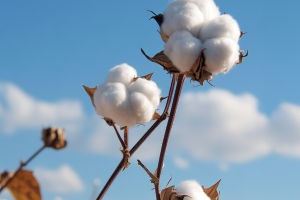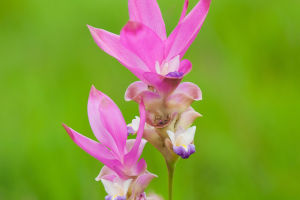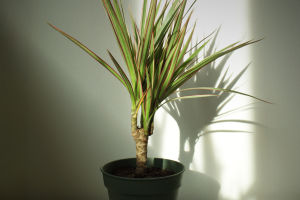
Cotton, often called the "King of Fibers,"is one of the most important natural fibers in the world. It has been a staple in the textile industry for centuries and remains a top choice for everything from clothing to home textiles.
But what makes cotton so special? Why is it considered the best fiber for textiles? Let's dive into the reasons behind cotton's amazing properties and why it continues to reign supreme in the world of fabrics.
What Makes Cotton the King of Fibers?
Cotton is often referred to as the "King of Fibers"due to its versatility, comfort, and high-quality properties. It is the most widely used natural fiber in the world, accounting for a significant portion of the global textile market. Cotton fibers come from the seedpod of the cotton plant, and these fibers are spun into yarn or thread, which is then woven or knitted into fabric.
One of the key reasons cotton is so valued is its softness. The fibers are naturally smooth, making cotton fabrics feel comfortable and gentle on the skin. This is especially important for clothing, as we all want to feel comfortable in what we wear. Cotton is also highly breathable, which means it allows air to flow through the fabric, keeping us cool in warm weather and warm in cooler conditions.
The Quality of Cotton Fibers
The quality of cotton fibers plays a significant role in determining the final fabric's softness, strength, and durability. High-quality cotton fibers are long, smooth, and strong, which allows them to be spun into fine threads that result in a soft, durable, and high-performance fabric. The length of the cotton fibers is one of the factors that determines the quality of the cotton. Longer fibers tend to produce a stronger, finer fabric, while shorter fibers may result in a coarser fabric.
Another factor that contributes to the high quality of cotton is the cotton's ability to absorb moisture. Cotton can absorb up to 27 times its weight in water, making it an excellent fabric for hot and humid climates. This moisture-wicking ability helps keep us dry and comfortable by pulling sweat away from the skin and allowing it to evaporate.
Why Cotton Is Preferred for Textiles?
Cotton is preferred for textiles because it combines strength, softness, and breathability—qualities that are crucial in fabric production. These properties make it ideal for everyday clothing, including t-shirts, jeans, and socks. It is also widely used in home textiles like bed sheets, towels, and curtains.
The fiber's strength is another reason for its widespread use. Cotton fabrics are durable and can withstand repeated washing and wearing without losing their shape or texture. This makes cotton an excellent choice for items that require both comfort and long-lasting durability.
Furthermore, cotton is hypoallergenic, which means it's less likely to cause skin irritation. This makes it a popular choice for people with sensitive skin or allergies. Cotton is also a natural fiber, which makes it an environmentally friendly option compared to synthetic fibers that are often made from petroleum-based products.
Cotton's Role in the Global Textile Industry
Cotton has been a cornerstone of the global textile industry for centuries. The cotton industry provides jobs for millions of people around the world, from farmers who grow the crops to workers in textile mills who process the fibers into fabric.
The demand for cotton continues to grow, especially as the textile industry shifts toward more sustainable and natural materials. Cotton's biodegradable nature and renewable growth cycle make it a more sustainable choice than many synthetic fibers. Additionally, cotton's ability to be recycled further enhances its sustainability profile.
Why Cotton Continues to Thrive?
Cotton's dominance in the textile world isn't just due to its history; it continues to thrive because of its adaptability and the ongoing research into improving cotton cultivation and processing. Advances in cotton farming, such as better pest control and drought-resistant varieties, have helped increase cotton production while reducing the environmental impact.
Cotton also continues to be at the forefront of innovation in the textile industry. New developments in cotton blends, where cotton is combined with other fibers like spandex or polyester, have led to the creation of fabrics that have the benefits of cotton, like comfort and breathability, while also incorporating the durability and stretch of synthetic fibers. This makes cotton even more versatile and suitable for a wider range of applications.
What About Cotton and Sustainability?
In today's world, sustainability is a major concern, and cotton is rising to the challenge. While cotton farming does require water and pesticides, modern farming techniques are making cotton production more sustainable. Organic cotton farming, which avoids synthetic pesticides and fertilizers, is becoming more popular and offers a more eco-friendly alternative.
Additionally, cotton is a renewable resource, and its biodegradability means that once cotton fabrics have outlived their usefulness, they won't contribute to long-term environmental waste. Recycling cotton and turning it into new products also helps reduce the environmental impact of cotton textiles.
What Do You Think, Lykkers?
Now that we know why cotton is called the "King of Fibers,"we'd love to hear your thoughts! Do you have a favorite cotton product that you can't live without? Or perhaps you've learned something new today about cotton's role in the textile world. Share your experiences or questions in the comments below! Let's keep the conversation going!


